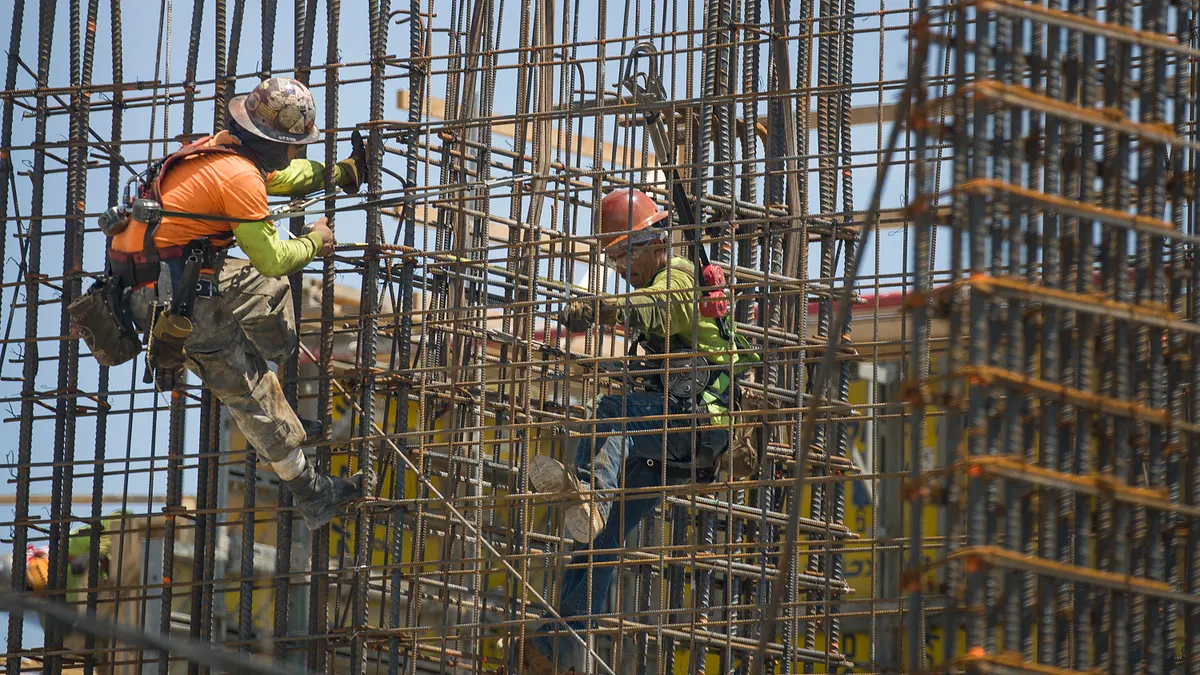Dive Brief:
- Labor shortages will likely ease amid an increase in coronavirus vaccinations and school reopenings, Fitch Ratings said, noting the availability of a vast pool of potential workers as total employment remains more than 5 million below pre-pandemic levels.
- Help wanted signs have gone unanswered in recent months as the economy rebounded, businesses reopened and workers, fearing the especially contagious delta variant of the virus, avoided the job market, Fitch said.
- Monthly payroll growth this year has averaged nearly three times the pre-pandemic rate, according to Fitch. “The concentration of the recent labor demand recovery in the L&H [leisure and hospitality] sector — where job attachment is lower than average — is also contributing to shortages.”
Dive Insight:
CFOs currently setting employee wage levels for 2022 confront both a labor shortage and inflation running at a 5.3% annual rate — close to its fastest pace in 13 years. Private-sector workers' average hourly pay rose 4.6% last month compared with a year earlier, according to the Labor Department.
The number of U.S. job openings rose to a record high of 10.9 million at the end of July, the Labor Department reported last month, as the delta variant discouraged many workers from employment. BLS tracks information dating to 2000.
U.S. manufacturers consider workforce shortages their biggest risk and, over the next 12 months, they plan to increase wages by 3.5%, a record rate in quarterly surveys dating to 1997, according to the National Association of Manufacturers. Yet CFOs may not need to anticipate a sustained rise in labor costs, Fitch said.
“Wage patterns do not currently suggest broad labor market overheating,” Fitch said. “The Employment Cost Index has picked up qoq [quarter-over-quarter], but this was concentrated mainly in reopening sectors, such as L&H, as relative wages adjust.”
Also, the supply of workers seeking employment is likely to rise.
“Broadening vaccination coverage should ease health fears,” Fitch said. “Schools fully reopened in early September and, despite some more recent temporary closures, this should ease constraints on parent labor force participation.”
The economy added just 194,000 jobs last month, the slowest job growth this year, with an especially weak payroll increase in public-sector jobs, the Labor Department reported Friday. The unemployment rate fell to 4.8% in September from 5.2% in August as many workers stopped their job search.
Still, the number of workers waiting on the sidelines of the job market is high, Fitch said, and the jobless rate is still well above its pre-pandemic level of 3.5%.
“More lasting falls in the labor force and higher structural employment are possible, but it is hard to see these reducing full employment by 5 million,” Fitch said.












